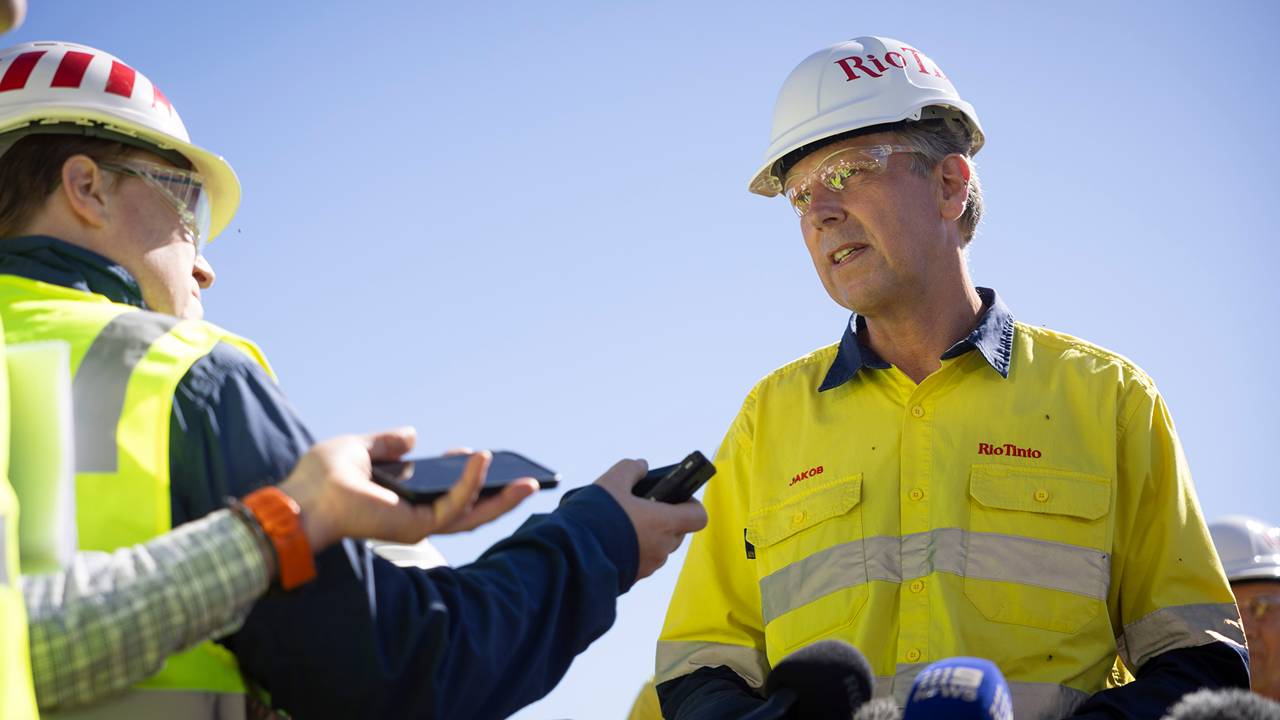The iron ore and steel market moves with the times as Pilbara mines degrade
Iron ore grades have been slipping from the Pilbara producers, and a new price index could bring greater transparency for investors.

Stockhead
Don't miss out on the headlines from Stockhead. Followed categories will be added to My News.
Aussie iron ore grades have been declining for years
Steel mills in China have been adapting to lower grades and higher impurities from Pilbara ores
Fastmarkets launches new 61% Fe Index to reflect shifting sands of iron ore and steel market
For several years the calling cry of the iron ore market was that grades would need to push higher, products become cleaner and quality control tighter to meet the demands of a Chinese steel sector seeking to reduce the emissions of its heavily polluting industry.
In reality the opposite has happened.
And the market has shown its inexhaustible adaptability in the face of changes thrust on it by macroeconomic pressures.
This week just gone Chinese rebar futures tumbled to an eight-year low amid a property sector bust that has torpedoed the profitability of China's steel mills.
Yet Chinese steel production remains on track to settle around the billion tonne mark for a sixth straight year. The response from mill operators has been to use lower grade material that costs less, aided by lower coking coal prices.
It also measures up with what the Pilbara's majors have been shipping. Grades from BHP (ASX:BHP) and Rio Tinto's (ASX:RIO) Pilbara mines have been sliding for years.
Rio, notably, recently told customers its Pilbara Blend fines would drop from long term grades of 61.6% Fe to 60.8% Fe from July to September this year. BHP downgraded its Mining Area C and Newman High Grade Fines products last year.
It reflects a trend that will continue until the majors invest in replacement mines that can arrest the decline, now seemingly baked into their operations, with BHP and RIO regularly reporting price realisations at a discount to the Platts 62% IODEX.
In response another price setter, Fastmarkets, has delivered one of the biggest changes to its indices in years, with the launch of a 61% Fe index.
Its first trading day on Monday June 2 reported that price a US$92.09/t, below the 62% Fe benchmark of US$93.65/t.
In many ways, it will likely give investors, and bean counters at the WA and Federal Governments, a more accurate picture of how much Rio and BHP's iron ore is actually pulling in.
"I think there's a lot of interest over the 61% index as it now starts to represent the major mid-grade iron ore segment, especially for Australian ores," Fastmarkets regional managing editor Paul Lim said.
"So I think miners and investors all around the world will be looking at the 61% Fe Index as a key barometer of how the Australian mining sector as well as how the Chinese economy is doing as a whole."
Both sides of the belt
The relationship between Australia's iron ore mines and China's steel market is often described as a conveyor belt which runs over the ocean.
So smooth is the network from mine to port in the Pilbara to factory door in Hebei, that it has enabled BHP, Rio, Roy Hill and Fortescue (ASX:FMG) to run at costs that make them the most profitable in the mining sector globally.
Even at record prices, gold producers are only now pulling in sales revenues at levels approaching double their cost base.
Iron ore miners, on the other hand, receive sales prices that are roughly four times their per tonne cash costs, and that's in a bearish market.
With grades slipping from the iron ore majors, Chinese steel mills have adapted to cope, in ways that also help them stem losses caused by weak domestic steel demand.
The 61% Fe Index incorporates material that not only has lower Fe grades than the 62% Fe benchmark but also higher impurities – partly a function of grade.
Steel mills are becoming more accepting of ore with higher silica and alumina (4.3% and 2.5% for the 61% index vs 4% and 2.3% for the 62% index), adapting their blast furnaces to refined discounted product.
"It depends on many factors, right? So, number one, the typical Chinese steelmaker is quite different now from the past, so now China is very skilled at blending ores and even with the weak steel margins they are willing to take on ores with higher impurities," Lim said.
Those ores are blended with domestic magnetite concentrates or pellet feed to get specs right in the blast furnace.
"The main driver is always profitability, they are looking for economical blends, so they are willing to take ores which are priced lower but have higher contaminant levels," Lim said.
"Coal is also cheap so it's easy for them to buy the cheap fuel to just burn through the lower grade iron ores.
"This produces a higher amount of slag, but they're OK with this. They will just remove the slag, and there's no need for increased productivity."
What does this mean for high grade?
Does this mean margin squeeze will squeeze high grade iron ore just as majors complete investments into new sources – Fortescue at its Iron Bridge magnetite project in the Pilbara and Rio/China at the Simandou project in Guinea, West Africa.
Maybe not.
As Lim stated, China's steelmakers have become adept at blending ores.
"The increase in contaminant levels as well as low Fe will have implications for other ores around the world – it will support high grade iron ore prices, it's just at this moment China may not be seeking as much high grade iron ore," he said.
"So this change is actually good for high grade producers around the world."
Industry participants have made similar comments, with the volume of iron ore suitable for use in lower emissions steelmaking technologies like direct reduced iron restricted by deposit grades and purity specifications.
That means most high grade iron ores will have value in blending with low grade ores to reduce emissions in blast furnaces.
"The best way to (reduce emissions), if you wanted to have an immediate impact, would be basically just to put cleaner ores in your blast furnaces," Cyclone Metals (ASX:CLE) CEO Paul Berend, whose firm is working with Brazil's Vale to develop the Iron Bear magnetite project in Canada, said.
"If you've got cleaner ores, you use less energy, less energy means less pollution, less CO2."
With the quality of hematite DSO ores degrading, Berend said WA miners had been slower than international producers like Vale to develop resources with potential to supply higher grade from magnetites.
Now READ: Bulk Buys: Calls for Aussie green iron grow, but we're missing the crucial ingredient
At Stockhead, we tell it like it is. While Cyclone Metals is a Stockhead advertiser, it did not sponsor this article.
Originally published as The iron ore and steel market moves with the times as Pilbara mines degrade


